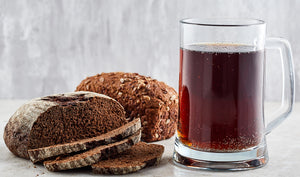So you picked up some hop rhizomes and you have absolutely no idea of what to do?
Here’s what you need to know about growing hops at home.
Picking a Spot
Hops are vines that can grow over 20 feet through the summer, so you’ll need a place they can climb. Set up some coarse twine for them to climb, usually on the side of a house or garage, along fences, or anywhere else with enough space.
Hops love the sun, so plant them in your favourite tanning spot. You should use pots filled with rich soil and good drainage so your little buddies don’t rot out. If drainage is a problem, you can build small mounds using surrounding topsoil mixed with organic matter (like sheep poop).
Planting
The first year your hop plant will have a minimal root system and will require frequent, but light watering. Be careful not to drown them with too much water. Mulching the soil surface with some organic matter helps conserve moisture and control weeds.
You should wait until the risk of the last frost is over. This will vary by region, so check locally for the best date to plant. Rhizomes can be kept in the fridge until you are ready to plant, but never freeze them! If you want to be a keener, you can plant them indoors in a pot and transplant outside once there’s no more risk of frost.
Plant rhizomes horizontally about 4 inches deep (with the buds pointing up) and about 3 feet apart. If they are different varieties you should have lots of space between them (4-5 feet). Separate pots would ideal in this case. When the vines grow to about 1 foot you should cut back the weakest shoots and leave the 4-6 strongest ones to grow.
Train them clockwise on a string that has been staked to the hill.
Harvesting
You might get some hops in the first season but your best harvest won’t be until year 3. Harvest hops in September just as you see signs that a few are beginning to start turning brown. The green hops should have bright yellow glands that burst and smell wonderful when you rub them together. There is information available about drying them but don’t hesitate to use them ‘wet’ for a unique and delicious hop flavour in your beer. They can be frozen in this form as well.
After harvest, cut the vines back to a few inches.
They will start growing the next spring on their own. Severe winters could conceivably kill the roots. (Although from experience, it doesn’t happen that often).
For extra protection, some people like to insulate them with a small layer of manure. Each spring apply a hearty dose of manure as a top dressing or fertilize with a balanced chemical fertilizer that is recommended for garden vegetables.



